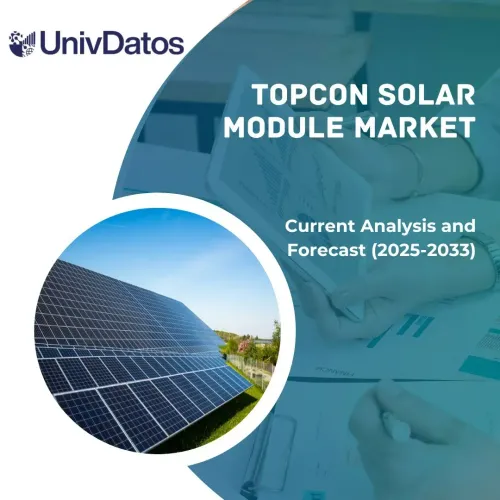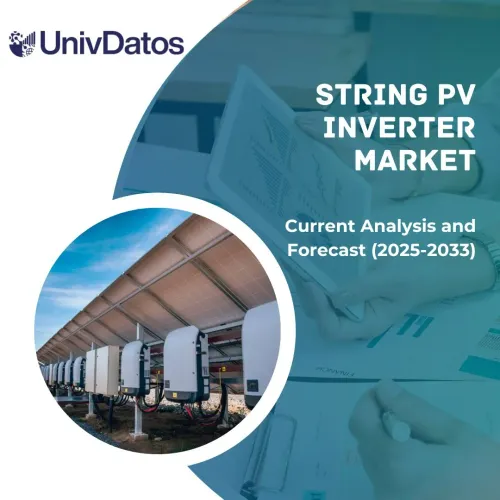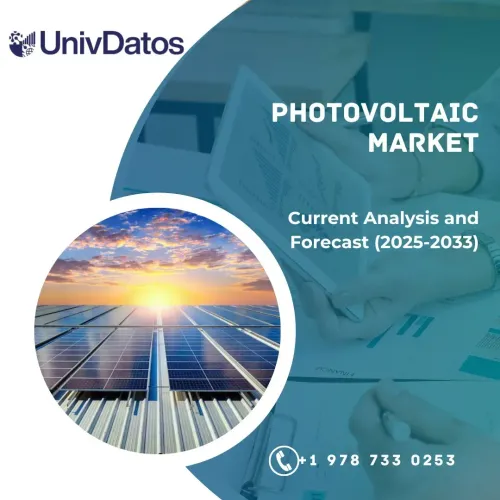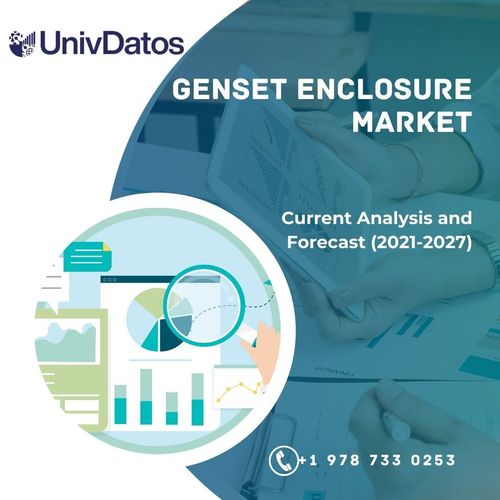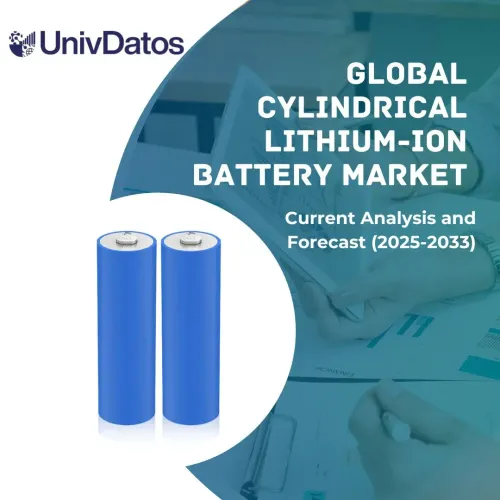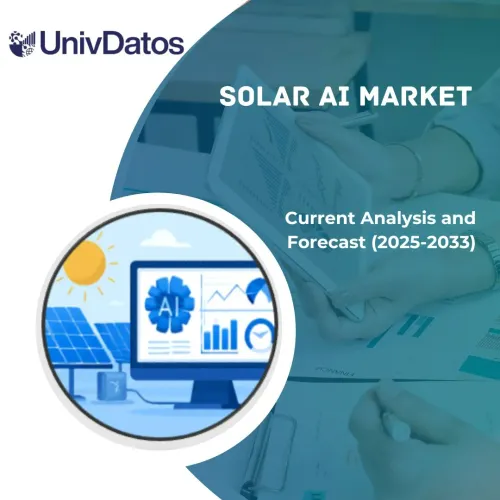Рынок IoT в нефтегазовой отрасли: текущий анализ и прогноз (2020-2030)
Акцент на решении (зондирование, связь, облачные и периферийные вычисления и управление данными), отраслевом сегменте (Upstream, Midstream и Downstream), применении (управление автопарком и активами, профилактическое обслуживание, мониторинг трубопроводов, управление безопасностью и другие), а также по регионам и странам
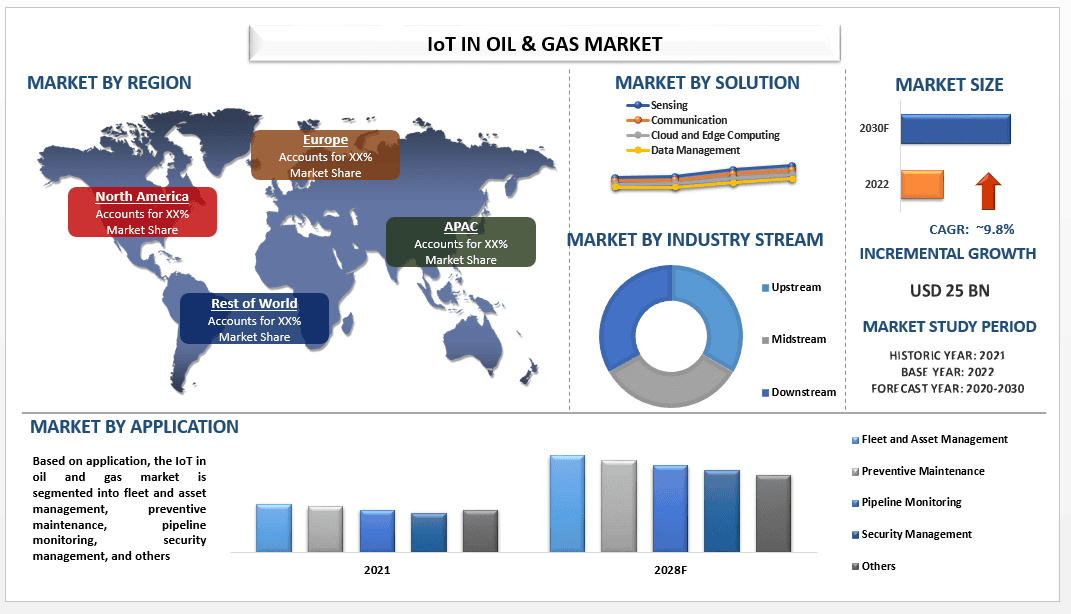
Ожидается, что рынок IoT в нефтегазовой отрасли будет расти со среднегодовым темпом роста (CAGR) в 9,8% в течение прогнозируемого периода (2020-2030 гг.).IoT в нефтегазовой отрасли удовлетворяет значительный спрос во всем мире и, как ожидается, окажет существенное влияние на рост рынка в прогнозируемый период. Это в основном связано с такими факторами, как Интернет вещей (IoT), который как системный интегратор помогает аккумулировать всю цепочку создания стоимости нефти и газа в рамках единой операционной платформы, решая конкретные задачи, ориентированные на клиента, наряду с улучшением общей производительности.
В дополнение к этому, растущая угроза кибератак и снижение доступности квалифицированной рабочей силы в нефтегазовой отрасли являются другими основными факторами, стимулирующими рост рынка. Кроме того, внедрение устройств IoT повышает операционную производительность, следовательно, снижая операционный риск, повышая интеллект и развивая более высокую производительность труда и экономичность по времени..
Некоторые из основных игроков, работающих на рынке, включают ABB Ltd., Alphabet Inc., Amazon Web Services, Inc., Analog Device, Inc., BP p.l.c., Broadcom Inc., C3 IoT, Inc., CISCO Systems Inc., Cognizant, ENGIE.
Несколько слияний и поглощений, а также партнерств были предприняты этими игроками для предоставления клиентам высокотехнологичных и инновационных продуктов/технологий.
Анализ, представленный в отчете
«Среди решений сегмент управления данными занимал доминирующую долю рынка в 2022 году»
В зависимости от решения, IoT на рынке нефти и газа сегментируется на зондирование, связь, облачные и периферийные вычисления и управление данными. Сегмент управления данными удовлетворил значительный спрос на IoT на рынке нефти и газа. Управление данными через IoT позволяет пользователям преобразовывать огромные данные в важную информацию и помогает пользователю эффективно отслеживать, контролировать и управлять устройствами, тем самым увеличивая рост сегмента.
«Среди приложений управление автопарком и активами занимало наибольшую долю рынка в 2022 году»
В зависимости от применения, IoT на рынке нефти и газа сегментируется на управление автопарком и активами, профилактическое обслуживание, мониторинг трубопроводов, управление безопасностью и другие. Сегмент автопарка и активов занимает значительную долю рынка IoT на рынке нефти и газа. Управление активами требует точных ежедневных данных об операционных процессах в нефтегазовой отрасли и оборудовании, подключенном к устройствам IoT, чтобы предсказать, когда им потребуется обслуживание, чтобы ремонт можно было запланировать задолго до их поломок, чтобы предотвратить длительные простои и обеспечить безопасность сотрудников..
Обзор отчета по рынку IoT в нефтегазовой отрасли
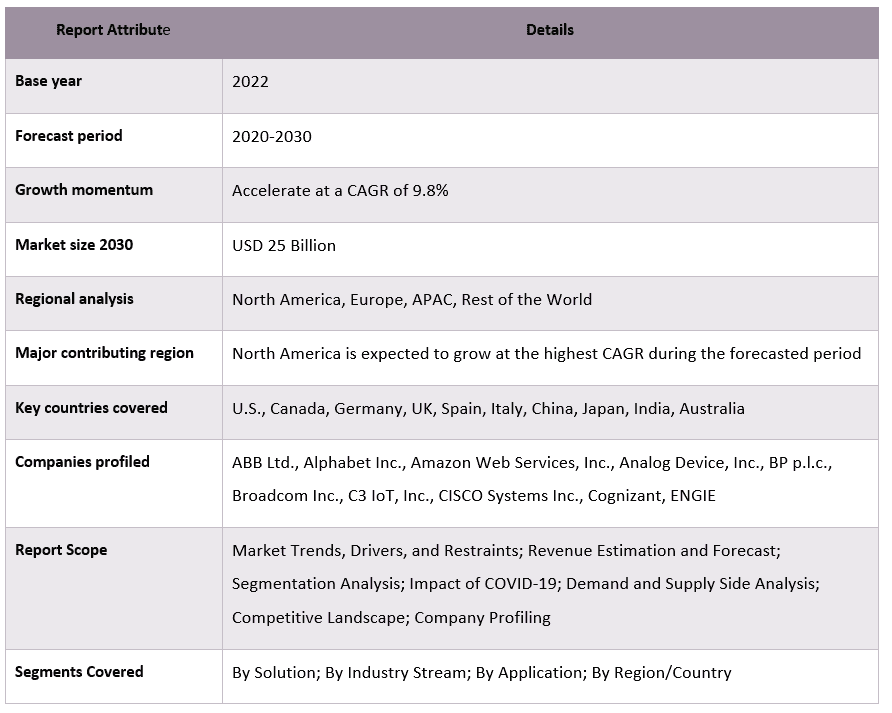
«Северная Америка занимает значительную долю рынка IoT в нефтегазовой отрасли в 2022 году»
Ожидается, что рынок Северной Америки зарегистрирует самый высокий темп роста в прогнозируемый период. Это в основном связано с такими факторами, как стремительное внедрение технологий искусственного интеллекта операторами нефтепромыслов и поставщиками услуг в сочетании с растущим присутствием выдающихся поставщиков программного обеспечения и систем ИИ, а также государственные инвестиции в частные компании для роста и развития научно-исследовательских работ, что стимулирует спрос на IOT в нефтяной и газовой промышленности в регионе.
Причины для покупки этого отчета:
- Исследование включает в себя оценку размера рынка и анализ прогнозов, подтвержденные проверенными ключевыми отраслевыми экспертами.
- Отчет представляет собой краткий обзор общей производительности отрасли с первого взгляда.
- Отчет содержит углубленный анализ выдающихся отраслевых коллег с основным акцентом на ключевые финансовые показатели бизнеса, портфели продуктов, стратегии расширения и недавние разработки.
- Детальное изучение движущих сил, ограничений, ключевых тенденций и возможностей, преобладающих в отрасли.
- Исследование всесторонне охватывает рынок по различным сегментам.
- Углубленный анализ отрасли на региональном уровне.
Варианты настройки:
Глобальный рынок IoT в нефтегазовой отрасли может быть дополнительно настроен в соответствии с требованиями или любым другим сегментом рынка. Кроме того, UMI понимает, что у вас могут быть собственные бизнес-потребности, поэтому не стесняйтесь обращаться к нам, чтобы получить отчет, который полностью соответствует вашим требованиям.
Содержание
Методология исследования для анализа рынка IoT в нефтегазовой отрасли (2020-2030)
Анализ исторического рынка, оценка текущего рынка и прогнозирование будущего рынка мирового рынка IoT в нефтегазовой отрасли были тремя основными шагами, предпринятыми для создания и анализа внедрения IoT в нефтегазовой отрасли в основных регионах мира. Был проведен исчерпывающий вторичный анализ для сбора исторических данных о рынке и оценки текущего размера рынка. Во-вторых, чтобы подтвердить эти данные, были приняты во внимание многочисленные выводы и предположения. Кроме того, были проведены исчерпывающие первичные интервью с отраслевыми экспертами по всей цепочке создания стоимости мирового рынка IoT в нефтегазовой отрасли. После предположения и проверки рыночных данных посредством первичных интервью мы применили подход сверху вниз/снизу вверх для прогнозирования общего размера рынка. После этого были приняты методы разбивки рынка и триангуляции данных для оценки и анализа размера рынка сегментов и подсегментов соответствующей отрасли. Подробная методология объясняется ниже:
Анализ исторического размера рынка
Шаг 1: Углубленное изучение вторичных источников:
Подробное вторичное исследование было проведено для получения исторического размера рынка IoT в нефтегазовой отрасли через внутренние источники компании, такие какгодовые отчеты и финансовая отчетность, презентации о результатах деятельности, пресс-релизы и т. д.,и внешние источники, включаяжурналы, новости и статьи, правительственные публикации, публикации конкурентов, отраслевые отчеты, сторонние базы данных и другие авторитетные публикации.
Шаг 2: Сегментация рынка:
После получения исторического размера рынка IoT в нефтегазовой отрасли мы провели детальный вторичный анализ для сбора исторических рыночных данных и долей для различных сегментов и подсегментов для основных регионов. Основные сегменты включены в отчет как решение, отраслевой поток и применение. Дальнейшие анализы на уровне стран были проведены для оценки общего внедрения моделей тестирования в этом регионе.
Шаг 3: Факторный анализ:
После приобретения исторического размера рынка различных сегментов и подсегментов мы провели подробныйфакторный анализдля оценки текущего размера рынка IoT в нефтегазовой отрасли. Кроме того, мы провели факторный анализ с использованием зависимых и независимых переменных, таких как решение, отраслевой поток и применение IoT в нефтегазовой отрасли. Был проведен тщательный анализ сценариев со стороны спроса и предложения с учетом ведущих партнерств, слияний и поглощений, расширения бизнеса и запусков продуктов в секторе IoT в нефтегазовой отрасли по всему миру.
Оценка и прогноз текущего размера рынка
Оценка текущего размера рынка:Основываясь на практических данных, полученных в результате вышеуказанных 3 этапов, мы пришли к текущему размеру рынка, ключевым игрокам на мировом рынке IoT в нефтегазовой отрасли и долям рынка сегментов. Все необходимые доли процентов, разбивки рынка были определены с использованием вышеупомянутого вторичного подхода и были подтверждены посредством первичных интервью.
Оценка и прогнозирование:Для оценки и прогноза рынка были присвоены веса различным факторам, включая драйверы и тенденции, ограничения и возможности, доступные для заинтересованных сторон. После анализа этих факторов были применены соответствующие методы прогнозирования, то есть подход сверху вниз/снизу вверх, чтобы получить прогноз рынка на 2028 год для различных сегментов и подсегментов на основных рынках мира. Методология исследования, принятая для оценки размера рынка, включает в себя:
- Размер рынка отрасли с точки зрения выручки (USD) и скорость внедрения IoT на рынке нефти и газа на основных внутренних рынках
- Все процентные доли, разбивки и детализации сегментов и подсегментов рынка
- Ключевые игроки на мировом рынке IoT в нефтегазовой отрасли с точки зрения предлагаемых продуктов. Также стратегии роста, принятые этими игроками для конкуренции на быстрорастущем рынке
Проверка размера и доли рынка
Первичные исследования:Были проведены углубленные интервью с ключевыми лидерами мнений (KOL), включая руководителей высшего звена (CXO/VP, руководители отделов продаж, руководители отделов маркетинга, руководители отделов операционной деятельности, региональные руководители, руководители стран и т. д.) по основным регионам. Затем результаты первичных исследований были обобщены и проведен статистический анализ для подтверждения заявленной гипотезы. Данные первичных исследований были объединены со вторичными данными, что позволило превратить информацию в действенные выводы.
Разделение первичных участников по различным регионам
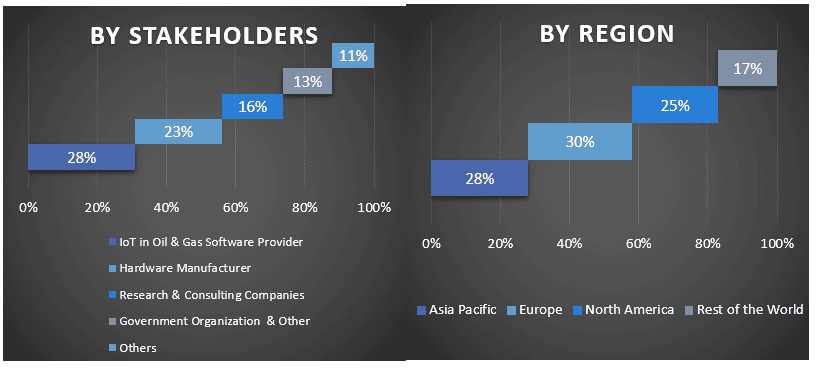
Инженерия рынка
Метод триангуляции данных был использован для завершения общей оценки рынка и получения точных статистических данных для каждого сегмента и подсегмента глобального рынка IoT в нефтегазовой отрасли. Данные были разделены на несколько сегментов и подсегментов после изучения различных параметров и тенденций в областях решения, отраслевого потока и применения на мировом рынке IoT в нефтегазовой отрасли.
Основная цель исследования мирового рынка IoT в нефтегазовой отрасли
В исследовании были определены текущие и будущие рыночные тенденции мирового рынка IoT в нефтегазовой отрасли. Инвесторы могут получить стратегическую информацию для обоснования своих решений об инвестициях на основе качественного и количественного анализа, проведенного в исследовании. Текущие и будущие рыночные тенденции определили общую привлекательность рынка на региональном уровне, предоставив участникам отрасли платформу для освоения неиспользованного рынка, чтобы получить выгоду от преимущества первого хода. Другие количественные цели исследований включают:
- Проанализировать текущий и прогнозируемый размер рынка IoT в нефтегазовой отрасли с точки зрения стоимости (USD). Также проанализировать текущий и прогнозируемый размер рынка различных сегментов и подсегментов
- Сегменты исследования включают области решения, отраслевого потока и применения.
- Определение и анализ нормативно-правовой базы для отрасли IoT в нефтегазовой отрасли
- Анализ цепочки создания стоимости с участием различных посредников, а также анализ поведения клиентов и конкурентов в отрасли
- Проанализировать текущий и прогнозируемый размер рынка IoT в нефтегазовой отрасли для основных регионов
- Основные страны регионов, изучаемых в отчете, включают Азиатско-Тихоокеанский регион, Европу, Северную Америку и остальной мир
- Профили компаний на рынке IoT в нефтегазовой отрасли и стратегии роста, принятые участниками рынка для выживания на быстрорастущем рынке
- Детальный анализ отрасли на региональном уровне
Связанные Отчеты
Клиенты, купившие этот товар, также купили


